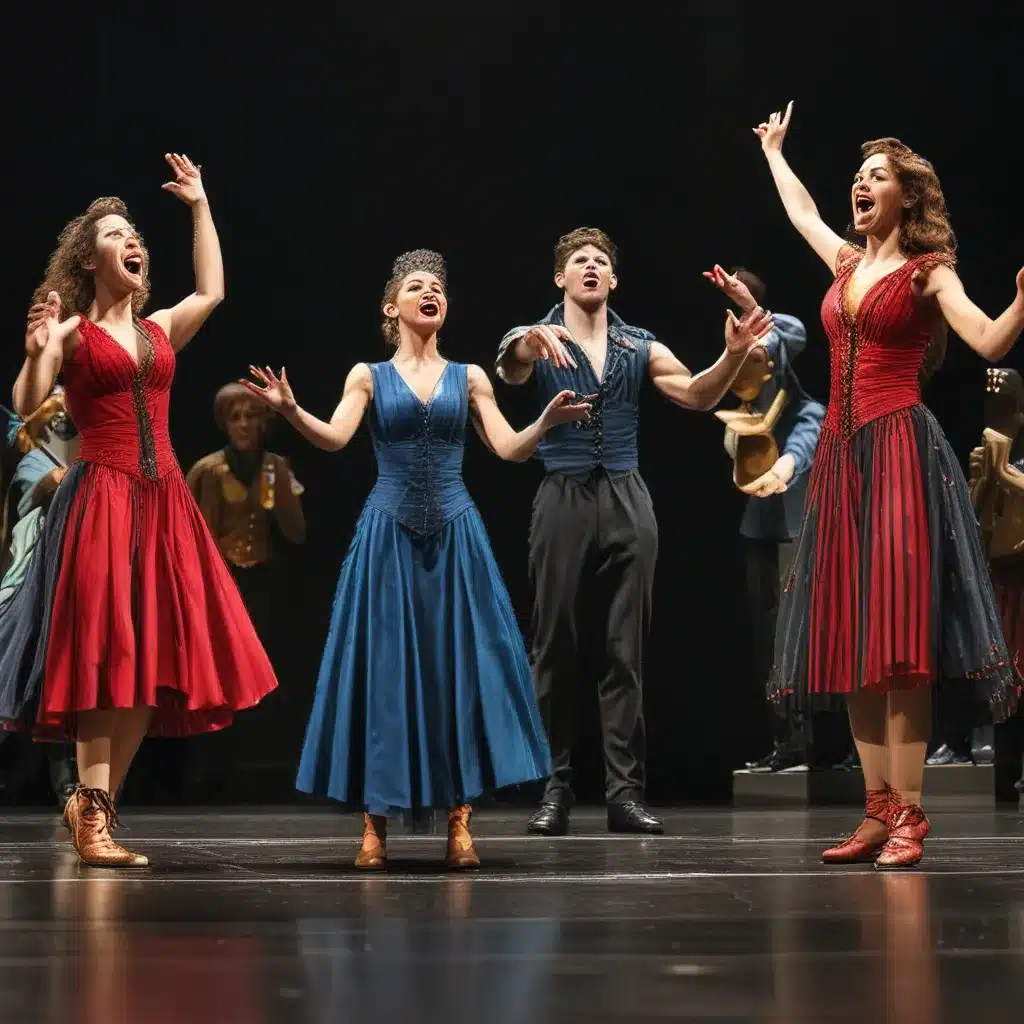
Unleashing the Rhythmic Revolution on Broadway
More than two decades ago, a ripple of rhythm and rhyme began to make waves in the heart of Broadway. It was the work of a rising Puerto Rican-American star, Lin-Manuel Miranda, whose affluence in the freestyle rap culture and unmatched talent for crafting lyrically beautiful dialogues would soon usher in a new era of theater.
It all started in 2008, when Miranda picked up a biography of the founding father Alexander Hamilton by Ron Chernow during a vacation. His artistic lens detected a rich narrative brimming with colossal struggles, passionate politics, and potently human relationships – fertile ground for an inspired musical. Miranda envisioned a theatrical masterpiece that would tell the tale of a largely unsung American hero, injecting a strong dose of vitality into our understanding of history.
But the road to translating this idea into action was paved with substantial obstacles. Part of this challenging path involved a grueling struggle to work alongside a playwright. As the story goes, waiting for the busy playwrights availability felt like a living nightmare for the passionate Miranda. The waiting soon gave way to a decision that would ultimately redefine the very contours of Hamilton – driven by a mix of determination, Miranda chose to dive in and write the entire musical on his own.
The Rhythmic Roots of Hamilton
Miranda’s love for hip-hop takes root in the cultural melting pot of Manhattan’s Inwood neighborhood, where the future Broadway icon spent his formative years. Hip-hop, the rising genre laden with crisp beats and brimming with vivid storytelling, found a special place in the young Miranda’s heart.
Fanning this budding love, his local bus driver with a passion for rap drilled Miranda into the gritty yet rhythmically rich lyrics by Boogie Down Productions, Geto Boys, and the Sugarhill Gang on his daily ride to school. Miranda’s sister also nudged him toward the revolutionary culture and sounds of New York’s hip-hop scene, taking him to see Beat Street, an influential early film about hip-hop. Soon, he was bobbing his head to the beats of the Fat Boys, saluting the audacious Beastie Boys, and immersing himself in the lyrical landscapes of Eric B. & Rakim.
These rich experiences converged to form a source of inspiration that Miranda would later tap into while composing Hamilton. The fusion of classical theatre and contemporary music within the blockbuster musical isn’t accidental; rather, it is a reflection of Miranda’s musical journey – a journey marked by a deep reverence for hip-hop and a burning desire to weave this admiration into the very fabric of Broadway.
Rhythm, Rhyme, and the Resonance of History
Miranda took these genres and anchored them deeply into Hamilton’s narrative. Hip-hop’s rich vocabulary and swift rhythm gave him the flexibility to deliver complex historical information quickly and engagingly, while R&B softened the historical narrative’s edges with its smooth, soul-stirring melodies.
Drawing from the diverse hip-hop history, Miranda took inspiration from the distinctive styles of many legends to sculpt the characters in Hamilton. In the creative cosmos of Miranda’s mind, each character in Hamilton took on a distinct rhythmic identity, reflecting the artistic styles of several notable hip-hop artists.
For example, George Washington, the voice of reason and maturity among the motley crew, emerged as a balanced fusion of Common and John Legend. Hercules Mulligan, on the other hand, embodied the raw energy and audacious spirit of Busta Rhymes. Alexander Hamilton, the driving force of the musical, however, was crafted after Miranda’s favorite polysyllabic rhyming heroes – Rakim, Big Pun, and Eminem.
In Miranda’s universe, every character is uniquely defined yet tethered to the rich tapestry of hip-hop. Their personas echo the spirit of these iconic rappers, presenting a fresh perspective into historical characters through the rhythm and rhyme of contemporary times.
Rhythm, Resonance, and the Timeless Allure of Musical Theatre
The musical contains countless references and homages to these hip-hop artists. In the electrifying cabinet debates of Cabinet Battle No. 1, Miranda brilliantly incorporates elements of rap battles inspired by the 8 Mile. However, it is during Thomas Jefferson’s second verse that Miranda pays homage to the iconic Grandmaster Flash and the Furious Five’s groundbreaking single, “The Message.”
In the anthem of ambition, “My Shot,” Alexander Hamilton showcases his verbal dexterity, and it’s only fitting that he pays homage to some of the great MCs. In the first verse, Hamilton borrows a line from Prodigy of Mobb Deep, declaring, “I’m only 19, but my mind is old.” The song also echoes tracks by Notorious B.I.G. These are only a few of hundreds of references that infuse every single number in the musical.
The creation of the songs in the musical Hamilton is a fascinating journey that showcases Lin-Manuel Miranda’s creative genius. In May 2009, Miranda was invited by President Obama’s staff to perform at a Poetry Jam in the White House. While he was expected to perform a song from his previous hit, In the Heights, Miranda took a bold and unexpected decision, choosing to perform “Alexander Hamilton,” the only song he had written for his new project.
As the rhythmic revolution continued to unfold on Broadway, the resonance of Hamilton’s timeless themes and contemporary musical stylings captivated audiences far and wide. The Musical Theatre Center has been at the forefront of this cultural renaissance, offering educational programs and performance opportunities that inspire the next generation of musical theatre innovators. By seamlessly blending the past and the present, Miranda’s Hamilton has not only left an indelible mark on the industry but has also paved the way for a future where the rhythm, resonance, and resonance of musical theatre will continue to captivate audiences for generations to come.

